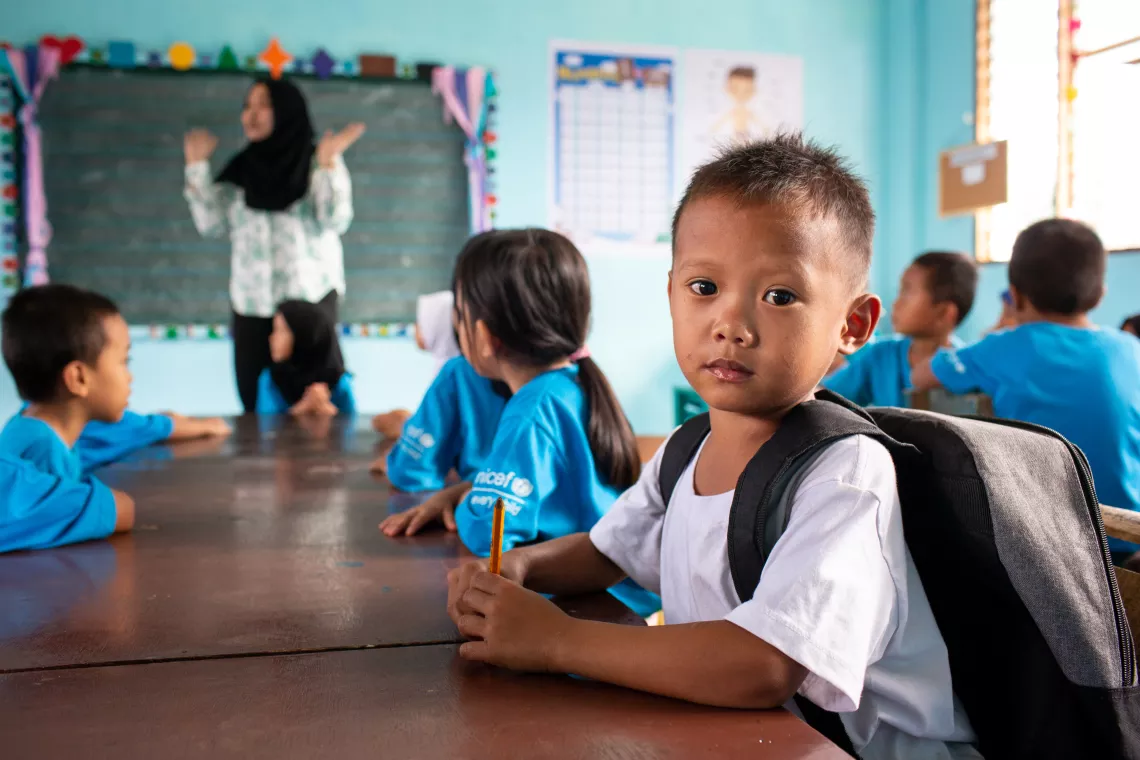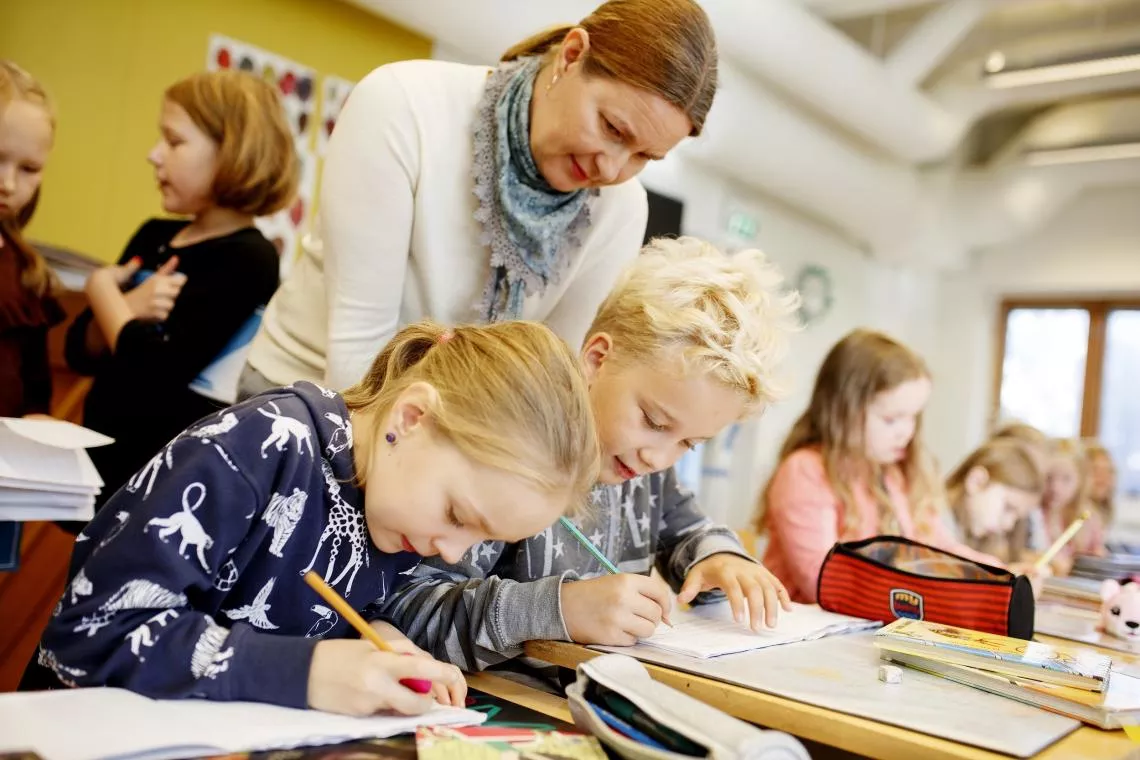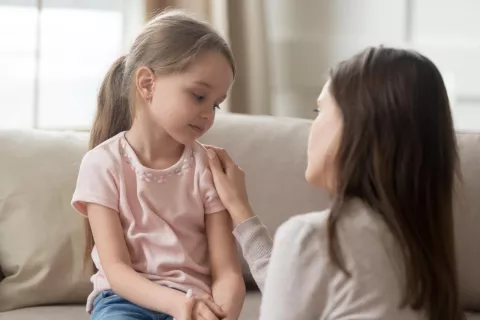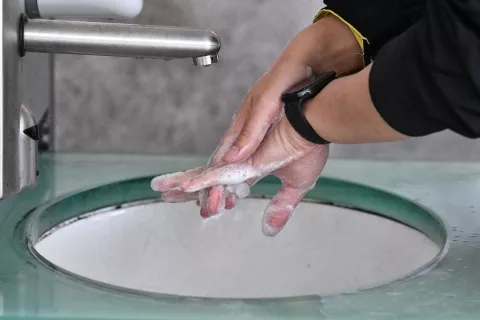How teachers can talk to children about coronavirus disease (COVID-19)
Tips for having age appropriate discussions to reassure and protect children.

- Available in:
- 中文
- English
As people around the world are taking precautions to protect themselves, their families and their communities from coronavirus disease (COVID-19) it’s also important that children can continue to learn, and that they can do so in an environment that is welcoming, respectful, inclusive, and supportive to all.
Schools and teachers play a vital role in this. Sharing accurate information and science-based facts about COVID-19 will help diminish students’ fears and anxieties around the disease and support their ability to cope with any secondary impacts in their lives.
Here are some suggestions about how teachers can engage students of different ages (preschool, primary, lower secondary and upper secondary) on preventing and controlling the spread of COVID-19 and other viruses. Any conversations or activities should always consider the specific needs of children, the guidance provided by your school, local and/or national authorities, and be based on reputable sources such as UNICEF and the World Health Organization.
Preschool
- Focus on communicating good health behaviours, such as covering coughs and sneezes with the elbow and washing hands. See more on how to avoid the risk of infection here.
- One of the best ways to keep children safe from coronavirus and other diseases is to simply encourage regular handwashing, for at least 20 seconds. It doesn't need to be a scary conversation. Sing along with The Wiggles or follow this dance to make learning fun. See more on handwashing here.
- Develop a way to track how children are washing their hands and find ways to reward them for frequent/timely hand washing.
- Use puppets or dolls to demonstrate symptoms (sneezing, coughing, fever), what to do if children feel sick (like if their head hurts, their stomach hurts, or if they feel hot or extra tired), and how to comfort someone who is sick (cultivating empathy and safe caring behaviours).
- When it’s circle time, have children sit farther apart from one another by practicing stretching their arms out or ‘flapping their wings’ – they should keep enough space between each other so that they are not touching their friends.

Primary school
- Make sure to listen to children’s concerns and answer their questions in an age appropriate manner; don’t overwhelm them with too much information. Encourage them to express and communicate their feelings. Discuss the different feelings they may be experiencing and explain that these are normal reactions to an abnormal situation.
- Emphasize that children can do a lot to keep themselves and others safe. For example, introduce the concept of social distancing (standing further away from friends, avoiding large crowds, not touching people if they don’t need to, etc.). Also, focus on good health behaviours, such as covering coughs and sneezes with the elbow and washing hands. See more on how to avoid the risk of infection here.
- Help children understand the basic concepts of disease prevention and control. Use exercises that demonstrate how germs can spread. For example, you can put coloured water in a spray bottle and spray it on a piece of white paper, then observe how far the droplets travel.
- Demonstrate why it’s so important to wash hands for 20 seconds with soap. For example, put a small amount of glitter in a student’s hands and have them wash them with just water and notice how much glitter remains. Then have them wash for 20 seconds with soap and water and see how the glitter is gone.
- Have students analyse texts to identify high risk behaviours and suggest ways to change them. For example, a teacher comes to school with a cold. He sneezes and covers it with his hand. He shakes hands with a colleague. He wipes his hands afterwards with a handkerchief, then goes to class to teach. What did the teacher do that was risky? What should he have done instead?

Lower secondary school
- Make sure to listen to students’ concerns and answer their questions.
- Emphasize that students can do a lot to keep themselves and others safe. For example, introduce the concept of social distancing, and focus on good health behaviours, such as covering coughs and sneezes with the elbow and washing hands. See more on how to avoid the risk of infection here.
- Remind students that they can share healthy behaviours with their families.
- Encourage students to confront and prevent stigma. Discuss the reactions they may experience around discrimination, and explain that these are normal reactions in emergency situations. Encourage them to express and communicate their feelings, but also explain that fear and stigma make a difficult situation worse. Words matter, and using language that perpetuates existing stereotypes can drive people away from taking the actions they need to protect themselves. Read some do’s and don’ts for how to talk about the coronavirus with children.
- Build students’ agency and have them promote facts about public health.
- Incorporate relevant health education into other subjects. Science can cover the study of viruses, disease transmission and the importance of vaccinations. Social studies can focus on the history of pandemics and the evolution of policies on public health and safety.
- Have students make their own Public Service Announcements through school announcements and poster.
- Media literacy lessons can empower students to be critical thinkers and make them effective communicators and active citizens, which will improve their abilities to detect misinformation.
Upper secondary school
- Make sure to listen to students’ concerns and answer their questions.
- Emphasize that students can do a lot to keep themselves and others safe. For example, introduce the concept of social distancing, and focus on good health behaviours, such as covering coughs and sneezes with the elbow and washing hands. See more on how to avoid the risk of infection here.
- Encourage students to confront and prevent stigma. Discuss the reactions they may experience around discrimination, and explain that these are normal reactions in emergency situations. Encourage them to express and communicate their feelings, but also explain that fear and stigma make a difficult situation worse. Words matter, and using language that perpetuates existing stereotypes can drive people away from taking the actions they need to protect themselves. Read some do’s and don’ts for how to talk about the coronavirus with children.
- Incorporate relevant health education into other subjects. Science courses can cover the study of viruses, disease transmission and the importance of vaccinations. Social studies can focus on the history of pandemics and their secondary effects and investigate how public policies can promote tolerance and social cohesion.
- Have students make their own Public Service Announcements via social media, radio or even local TV broadcasting.
- Media literacy lessons can empower students to be critical thinkers and make them effective communicators and active citizens, which will improve their abilities to detect misinformation.




